There’s a common misconception that being prepared completely guarantees your safety. You’re stocked to the rafters with preserved food, multiple means to purify water, and enough ammo to make Burt Gummer blush. The garden outside is growing a healthy polyculture of vegetables, and you’ve got plenty of stuff to trade.
On paper, this sounds good, if not great!
Yet there are always going to be risks to your safety and sustainability. Both from the outside and from the potential mistakes you can make along the way. So, I thought I would take a closer look at some of these potential mistakes, the risks that might come with them, and safe alternatives to consider as you refine your preparedness strategy.
Letting Other People Know What You Have
The biggest mistake I think any prepper can make to jeopardize their safety is letting other people know just how prepared they are. It’s a very common scenario, where you take pride in the stockpile you’ve built and the sustainability practices you’ve implemented.
So, you share it with friends and family. Then your kids brag about it to all their friends at school, who mention it to their parents. Someone might even be foolish enough to over-share a few things on social media.
When SHTF, all these unprepared people come to you in a moment of desperation. Even if disaster doesn’t strike, there will still be tons of people who know if they’re desperate, out of work, or in trouble, that you’ve got things they might not be able to buy at a store.
Related: Pre-SHTF Mistakes That Might Get You Killed
The Safer Alternative
Keep your prepping supplies under wraps and out of sight. This means keeping quiet about your stockpile and making sure everyone in the family knows not to talk about it outside the home.
You also need to keep your stockpile out of sight in your own home. If your kid hosts a sleepover, or you have the neighbors over for coffee, that special room in your basement is always locked.
You could even go so far as to hide parts of your stockpile in secret compartments throughout the house. So, if SHTF and people do manage to raid your visible stash, there’s still something left behind for you to survive with.
Relying on a Single Shelter Location
Another common safety misconception is that one single hardened location is all you need to survive when SHTF. Yet there are a lot of situations that can overwhelm even the best-prepared shelter or hardened homestead.
This starts with natural disasters like floods, wildfires, and earthquakes that can decimate your primary shelter with little warning. Not to mention the very real risk of other people showing up on your doorstep when their own homes are compromised.
Related: How to Looter-Proof Your Survival Shelter
The Safer Alternative
While a bug-in location is ideal, the wise move is to establish multiple fallback locations. Maybe it’s a cabin in the woods or a relative’s farm. Then also make sure everyone in the family is aware of a rendezvous point, where you can all safely meet up if you do get separated. There’s also the option of building a shelter on your own. Choosing the right location for your shelter is far more important than it may seem. There are many mistakes that you can make while setting it up.
One of the biggest mistakes is building your shelter under large trees. It’s very common for the tallest trees to be the first one to get hit by lightning during storms. Another error that many people are prone to is setting up their camp very close to water. While it’s essential to be close to a source of water, being too close exposes you to flooding and to possible interactions with cougars or even bears looking to hydrate.
There are many other issues that can get in your way, and on page 13 of this guide I was able to find a lot of useful information that helped me have a very clear idea about how my shelter should look like. You can find below a video that will teach you everything you need to know about how to choose the right location and build the safest shelter in the wild.
Other than that, you should also practice bug-out drills, where everyone in the family participates in a calm, efficient evacuation. This will greatly reduce the safety risks that come from rushing through a bug-out when SHTF.
You might also consider strategically placing hidden resource caches in different places between your primary shelter and your bug-out location. So, if you do have to flee at a moment’s notice, you’ll at least be able to resupply enough to survive.
The Risks of a Remote Location
Having a remote homestead away from populated areas and prying eyes can be a bit of a double-edged sword when it comes to everyday safety. This starts with the concern of suffering a serious injury.
If your property is remote, and you have a heart attack or break a leg, you might not be able to get the help you need or quick access to emergency medical care. Every year thousands of people living in the backwoods or other remote areas suffer from a scenario like this. Even when they do manage to get to a rural clinic, it’s usually poorly staffed and lacking in specialty services.
The Safer Alternative
While going off the grid sounds great, there is a point where you could be too far out to get help when an everyday emergency strikes. If you’re choosing a new property to develop as a bug-in homestead, consider how terrain and vegetation might provide you with cover and a sense of remoteness, rather than mileage.
If you are dead set on being miles and miles down an empty road, be prepared to invest in the supplies and training to handle major emergencies. This can include things like CPR training, and advanced first aid classes.
Then also make a point to stock up with the supplies to do things like suture a wound or cauterize a major injury. When SHTF, access to medicine is essential. It’s important to build a kit filled with resources that can save your life and the lives of your family members. Beyond the essential tools, you’ll need painkillers, but most importantly, medications that can help reduce the risk of infection in case of injuries.
From this perspective, you must ensure you have a stockpile of antibiotics. This is crucial for you, since chances of survival during a crisis are slim without them, especially in the wilderness. The problem is that you can’t easily buy antibiotics, so improvisation is necessary. I recently learned that there are only 4 essential antibiotics that preppers stockpile regularly. While there’s still time, make sure you find out everything about them, especially how to stockpile them without a prescription.
Stockpiling Gear Without Necessary Skills
One of the biggest risks to your safety is stocking up on gear that you don’t necessarily know how to use properly. This includes firearms and reloading devices to make your own ammo.
However, pneumatic air tools, gasoline-powered chainsaws, and even simple power tools can cause life-threatening injuries. Especially if you aren’t trained to use them safely, or you’re lax about using the necessary safety equipment.
Related: 5 Survival Tools And Gear You Should Avoid When SHTF
The Safer Alternative
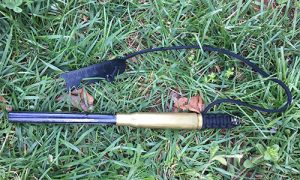
Anytime you buy a new tool, toy or piece of survival gear make sure to read all the safety instructions. Then take the time to practice using it safely long before trying to use it for work in the real world.
In the case of firearms, always make sure that you take all the necessary firearms safety classes, and training. Then put in the time to continually practice their safe use at the firing range.
Having an Isolationist Strategy
In this day and age, it might seem like the safe thing to do is prep and live your life in as much isolation as possible. Yet historically this has always been the least safe option in terms of surviving tough times.
One of the hard truths about survival is that no one is an island, and it often takes a village to survive. Whether you’re hurt, need help with a project, or run out of a critical supply, you have a better chance of survival if you have a healthy, trusting, cooperative relationship with your neighbors, and the community at large than if you just try to go it alone.
The Safer Alternative
Now I’m not saying it’s safe to blindly pool your resources with all your neighbors while you sing kumbaya and braid each other’s hair. Yet you should know where you stand with your friends and neighbors.
Explore those relationships and then actively work to build bonds with the people you can trust. Develop a sense of community with quality families and organizations around you.
In normal times, this can turn into a neighborhood watch program or create opportunities for you and your neighbors to buy supplies in bulk. When SHTF, you know who will stand with you, and you’ll already have existing strong relationships for fair-trade bartering.
Ignoring Physical Fitness
These days, one of the most dangerous mistakes people make is ignoring the importance of physical fitness. Far too often, preppers rely solely on their stockpile to get them through – only to develop health issues that leave them dependent on life-saving medication.
Related: Self-Defense Moves That Might Save Your Life Soon
In most cases, the root cause of health problems during a crisis is poor nutrition. Lack of physical activity can certainly take its toll, but failing to follow a smart, crisis-ready diet can be your downfall.
The Safer Alternative
If you want to be safe both in normal times and when SHTF, you need to maintain a basic level of physical fitness. For your fitness to be truly effective in critical situations, you need a holistic plan that includes both physical training and nutrition, but the focus must be on nutrition. This kind of discipline is often ignored by some people, but that mistake could prove fatal.
When creating a crisis preparedness plan, remember: without physical strength, you won’t be able to accomplish basic tasks that are essential for maintaining self-sufficiency like tilling your garden or repairing a weak section of your security fence. Not to mention the need for stamina to hike with a backpack or camp off-grid.
As I was saying, it’s important to stay in decent physical shape – at least enough to manage the essentials. Easier said than done, right? Well, not really. For starters, remember that knowledge is power. There’s plenty of talk out there about fitness and its importance, but when SHTF, vague advice won’t help anyone. You need clear, actionable information from a trusted source.
That’s exactly what I was looking for when I began digging deep into this subject, and I came across Joel Lambert’s book A Navy SEAL’s Bug-In Guide. It’s the ultimate source of inspiration for building a crisis-ready meal plan that fuels your body to face any emergency. When it comes to SHTF scenarios, the threats are endless — EMPs, nuclear strikes, and more. That’s why it’s critical to stay informed and always be prepared.
Final Thoughts
To truly maximize your safety in a crisis scenario, it’s crucial to understand which mistakes to avoid. There are many things you can overdo – just as there are many things you might completely overlook. The key is to focus on identifying trustworthy sources of information so you can strike the right balance – the kind of balance that can dramatically increase your chances of survival in life-or-death situations.
You may also like:
7 Life Skills I Wish I Knew Sooner
The Plant That Can Save Your Life In a Crisis (Video)
Overrated “Survival Skills” You Don’t Actually Need

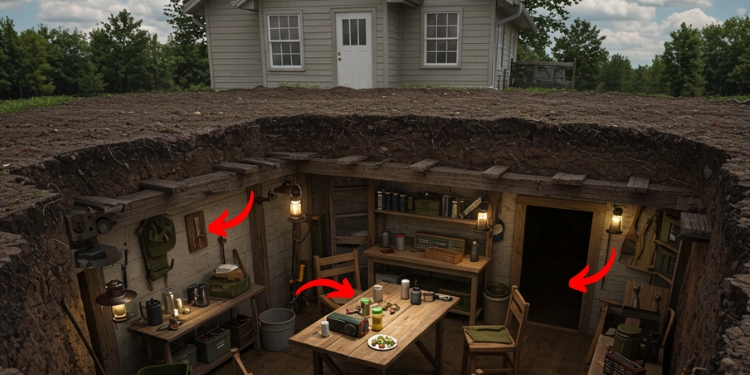
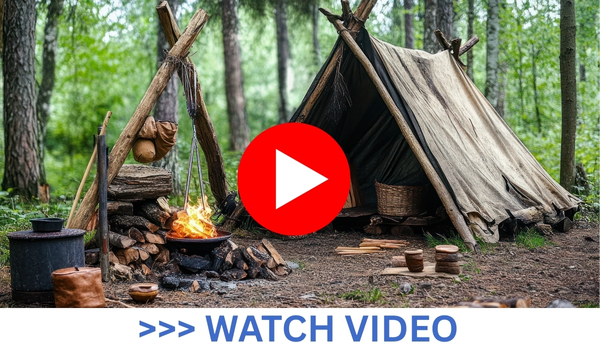








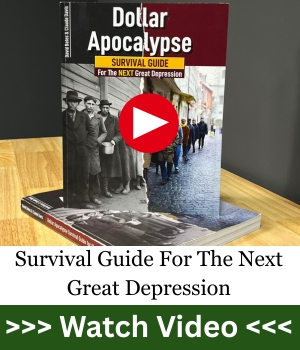





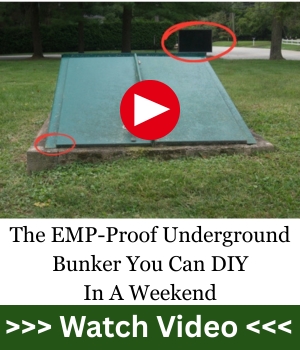






Trust will be EVERYTHING when it comes to your survival and the survival of your loved ones,
We are seeing all this going on today. It will become that you will see more and more of this. NO trust anywhere…
stay sharp
red ant
a said above always true , someone you can trust , character , idealogy, and way of thinking
as seen everywhere today what will the price be or what will they take to be a traitor
so Be Sure you background all who you trust
Just like judas who for money betrayed Jesus Christ .
be sure you know character , and idealogy
as the bible states clearly ( so as a man or woman Thinks So they are )
If they think a little stealing is ok , than they are a true Thief and it is a matter of time
If they Think Tit for Tat , then they will rationalize thier way of thinking
If they do not believe in a judgement for actions , then they will betray your trust , matter of time and opportunity
Character , real issue
Great Article
What if you get alot of Tit ? Can i eventually Tat ? Or just let it go depending…I don’t know my Tat would probably be different But i would probably let God deal with it… Plus then you know that person Tits….now you have the advantage…?
christopher
true so true…
stay sharp
red ant
Yes work out work out work out. Move your body. A pull-up air up push up bar at Walmart $30 easily. And add in a jump rope for $10. You’ll get your hear rate up. Jump rope 3 times for a minute each to start and 30 seconds off in-between. Then try the same with push ups and sit ups and pull ups. Start moving your body and getting your heart rate up now before a collapse could happen. We all pray it doesn’t happen.